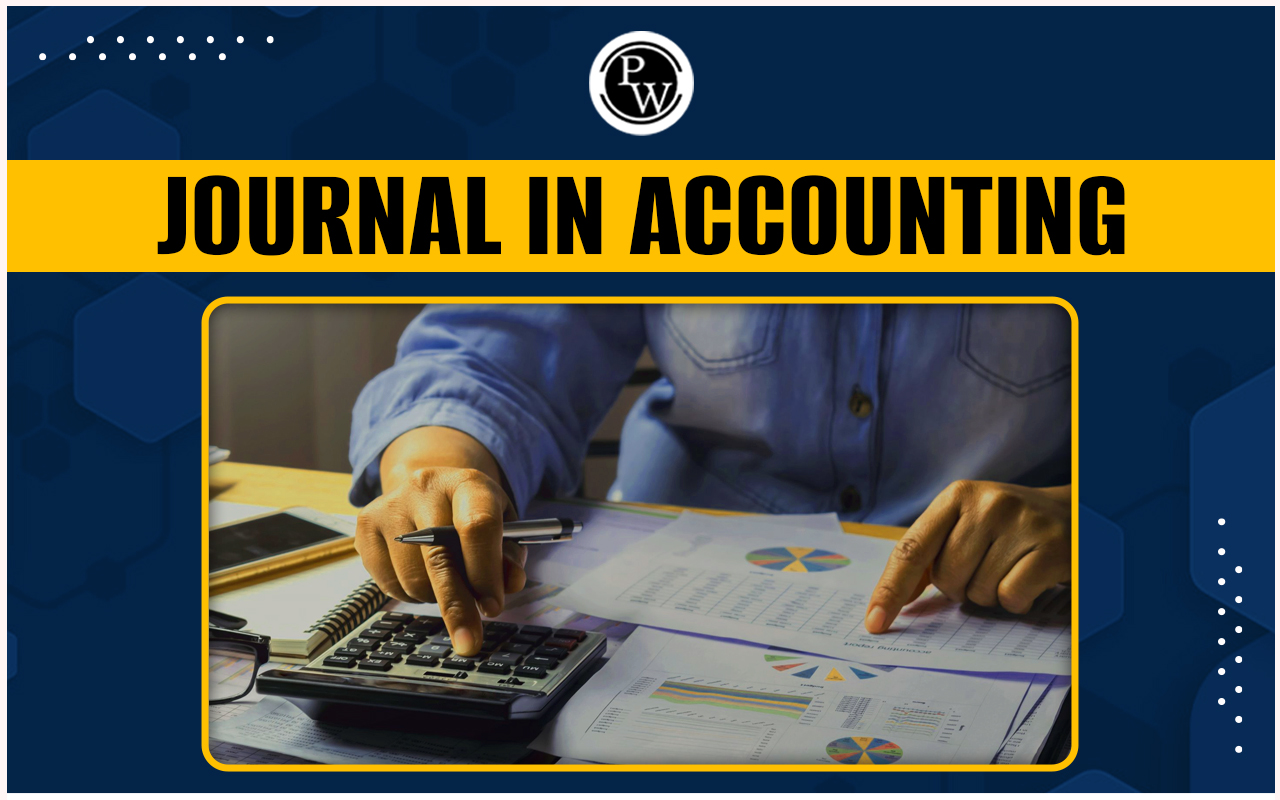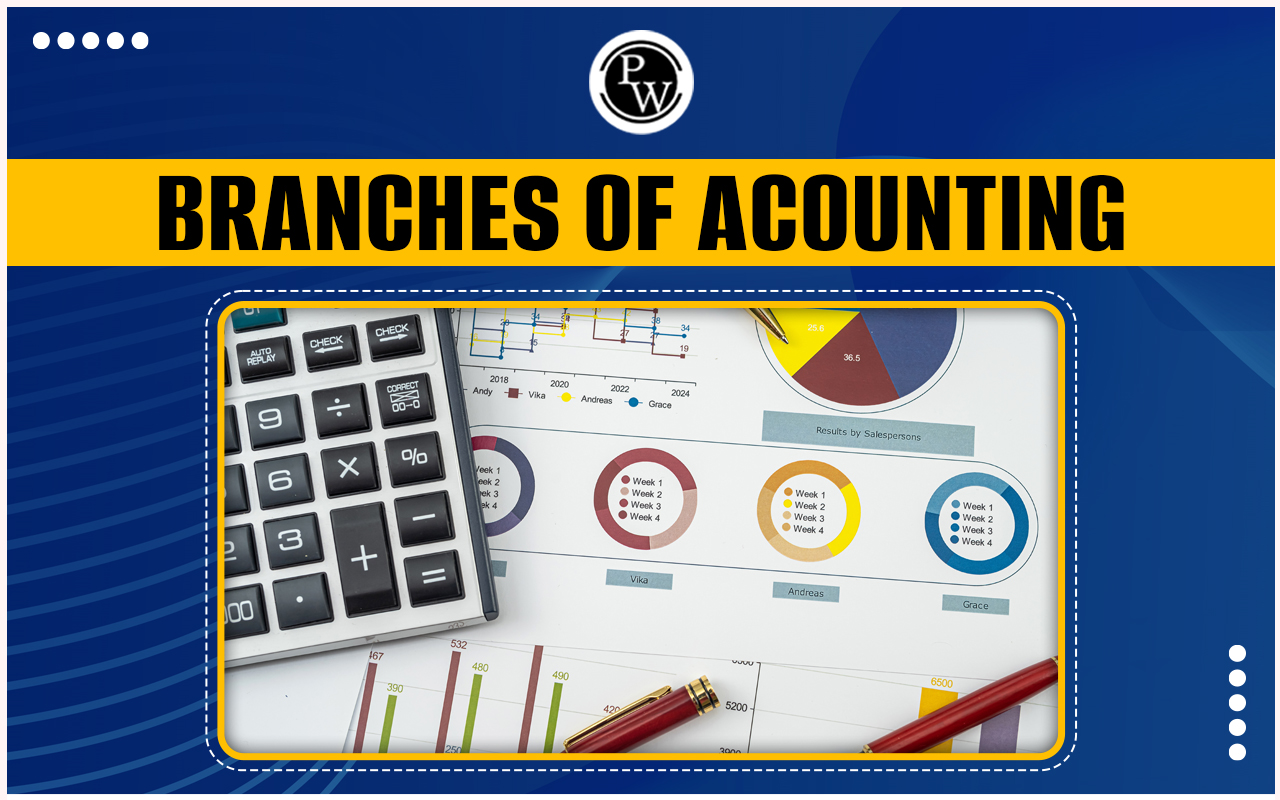

A journal in accounting, also called a book of original entries, is an official record that lists a company's financial transactions in chronological order. Accountants, bookkeepers, and auditors use this journal to track and evaluate the financial health of an organization.
Read on to learn about a journal in accounting for CA Exams , its benefits, and its key components. Additionally, we have included some common interview questions related to basic Journal in Accounting.What is Journal in Accounting?
Journals are comprehensive records of a business's financial transactions. These records help reconcile accounts in the future and transfer data to other accounting documents, like general ledgers. The ledger arranges journal information by account, summarizing all transactions within each account. Journal in Accounting is the initial step in the accounting process. Transactions are recorded in the order they happen, detailing the date, affected accounts, and transaction amounts using the double-entry bookkeeping method.Bookkeeping Methods
Journaling with Double-Entry Bookkeeping
Double-entry accounting is the most widely used bookkeeping method. It impacts how journal entries are recorded, with every transaction involving a transfer of funds between two accounts. Each journal entry has two columns. For example, if a business owner spends ₹1,000 in cash to buy inventory, the bookkeeper records two transactions: an increase in the inventory account by ₹1,000 and a decrease in the cash account by ₹1,000.Using Single-Entry Bookkeeping in Journals
Single-entry bookkeeping is less common in accounting and business. It's similar to a chequebook, using only one account per journal entry. This method provides a simple record of cash inflows and outflows. For instance, if a business owner spends $1,000 cash to buy inventory, the single-entry system records a $1,000 cash loss and shows the ending balance. By separating income and expenses into two columns, businesses can track total income and expenses, not just the final balance.Also Check: Difference Between Financial, Cost and Management Accounting
What Are Debits and Credits?
In accounting, debits raise what you owe, income, and ownership amounts, while lowering expenses and asset figures. Conversely, credits bolster liabilities, income, and ownership values, while reducing asset and spending amounts. The core accounting principle remains consistent: Debit the Interest Expense account and credit the Accrued Interest Payable account to record accruing interest on a bank loan. Let's delve into common journal entries often discussed in interviews.| Journal Entries for Interviews | ||
|---|---|---|
| Transaction | Debit | Credit |
| Purchase of Goods on Credit | Purchases account | Accounts Payable account |
| Sale of Goods on Credit | Accounts Receivable account | Sales account |
| Cash Sales | Cash account | Sales account |
| Cash Purchase | Purchases account | Cash account |
| Depreciation | Depreciation Expense account | Accumulated Depreciation account |
| Bad Debts | Bad Debt Expense account | Accounts Receivable account |
| Provision for Doubtful Debts | Bad Debt Expense account | Provision for Doubtful Debts account |
| Payment of Salaries | Salaries Expense account | Cash account |
| Receipt of Interest | Cash account | Interest Income account |
| Payment of Rent | Rent Expense account | Cash account |
Benefits of a Journal in Accounting
The benefits of using an Journal in Accounting include:Chronological Recording: A Journal in Accounting acts like a timeline of a company's financial activities. Each transaction is recorded in the order it happens, which helps in understanding the sequence of events, crucial during audits or financial reviews.
Detailed and Clear Information: Journals provide comprehensive details about each transaction, such as dates, amounts, affected accounts, and descriptions. This level of detail ensures clarity and helps readers grasp the purpose of every transaction.
Early Error Detection and Correction: Recording transactions in a journal allows early spotting and rectification of errors in the accounting process. Similar to proofreading before submission, catching mistakes early saves time and hassle later on.
Supports Double-Entry Bookkeeping: Journal in Accounting facilitate the double-entry system by illustrating how each transaction impacts different accounts, ensuring accurate balance maintenance.
Reference and Tracking: Serving as historical records, journals are invaluable for tracking trends, analyzing business performance, and planning for the future.
Legal Documentation: Often serving as legal records, journals demonstrate compliance with financial regulations and play a crucial role in legal proceedings or tax audits.
Simplifies Account Preparation: Journals streamline the preparation of final accounts by systematically organizing transactions, making it easier to transfer details to ledgers and final accounts.
Aids Decision-Making: Business owners and managers can analyze financial transactions through journal entries to make informed decisions. By understanding cash flow, they can identify growth opportunities and areas for cost reduction.
How to Enter a Transaction in a Journal for Accounting?
To enter a transaction in your Journal in Accounting, follow these steps:Gather Your Documents:
Before you record anything in your accounting journal, gather all the paperwork related to the transaction. This includes invoices, receipts, purchase orders, and any other documents that show money coming in or going out of your business. Keep these documents organized in a folder for easy access throughout the year. This step is crucial because it ensures you have all the information needed to make accurate entries in your journal.Understand the Impact:
Every transaction affects different accounts in your financial records. For example, when you buy new equipment like desks and computers, it affects accounts like cash (because you're spending money) and office supplies (because you're acquiring assets). Before you record the transaction, identify which accounts will be impacted so you can record it correctly.Classify Accounts:
Transactions are grouped into categories like assets, liabilities, revenue (income), and expenses. For instance, buying office supplies is an expense, and the money spent affects your cash account (an asset). Understanding these categories helps you know which accounts to debit (take money from) and credit (add money to) when making journal entries.Make the Journal Entry:
Now, it's time to record the transaction in your accounting journal. Start by listing each transaction in the order it happened, beginning with the earliest. Include the date of the transaction, the account number, the name of the account, and the amount of money debited and credited. In accounting, every transaction follows the double-entry method, which means for every debit (money going out), there's a corresponding credit (money coming in), and vice versa. This ensures your records stay balanced.Check Your Work:
Once you've entered all transactions, double-check your journal entries to ensure that the total debits equal the total credits. This balance is crucial for accurate financial reporting and compliance with accounting standards. Prepare for your CA exams with PW CA courses. Master accounting fundamentals, journal entries, and more. Enroll today to advance your career in accounting!| Also Check | |
| Public Finance and Budget | Inflation and Its Impact on Business |
| Common Accounting Mistakes | Economic Environment of Business |
| How to Read and Interpret Financial Statements? | GAAP vs. IFRS |
Journal in Accounting FAQs
What is the purpose of an accounting journal?
What is double-entry bookkeeping?
Why is it important to classify accounts before making journal entries?
How does a journal entry differ in double-entry versus single-entry bookkeeping?












